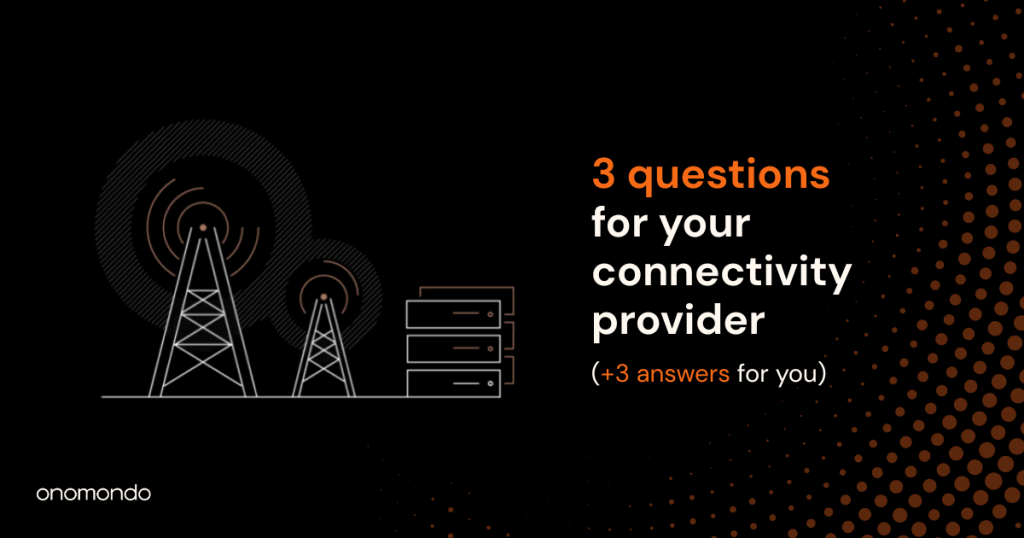The struggle to maintain seamless connectivity across an expanding fleet is the single largest pain point for today’s fleet managers, demanding a new approach to IoT management.
With thousands of devices, deployed in multiple countries, running on different local networks, connectivity management becomes technical, logistical, operational, and regulatory issues all at once.
While many network providers include basic SIM management platforms with their SIM offerings, the features can vary widely. Some businesses may opt for third-party software for flexibility, though this often comes with additional costs.
An IoT connectivity management platform (CMP) evolves from a convenient tool to a mission-critical solution for maintaining device visibility, control, and cost-efficiency at any deployment scale. Let’s take a look at how you can find the right connectivity management solution that simplifies overseeing devices and improves operations.
Table of Contents
What is an IoT connectivity platform?
An IoT connectivity management platform is a software solution that lets you control and manage device connectivity with relative ease. An IoT CMP integrates directly with network operators to provide comprehensive control over IoT connectivity.
You typically use these platforms to streamline your IoT operations, manage connectivity costs, and ensure reliable device communication globally.
Why use an IoT connectivity management platform?
The key benefit is avoiding the complexity of managing individual SIM cards and carrier relationships manually. An IoT CMP helps you:
- Customize your network coverage.
- Manage all SIM operations from a single dashboard.
- Seamlessly integrate with your preferred system setup.
- Optimize costs through detailed usage monitoring and billing.
- Gain real-time visibility for proactive issue management.
- Access security features to protect IoT devices.
How does an IoT connectivity management platform work?
So how does an IoT CMP actually work from a more technical perspective? The system operates through two main components:
- The management interface: It provides a centralized interface to control coverage, data usage, and costs across your IoT device fleet.
- Network infrastructure: This is where actual connectivity, routing, and data transmission are handled.
The specific features and capabilities vary by provider, influenced by factors like network architecture and cost optimization strategies. For example, our platform with core network integrations across 680+ carriers in 180+ countries can offer:
- Network and signaling insights
- Multi-carrier selection and switching
- Security and consumption optimization
- Real-time data performance monitoring
Customize your ideal coverage map by specifying which networks are allowed and which are not. Networks can be configured for each individual SIM at any moment through the Network Marketplace. Watch this video to learn more.
What are the key elements of an IoT CMP?

It ranges from simple SIM management and billing to sophisticated systems handling core network functions, connectivity provisioning, and access to troubleshooting and security tools.
Typical features include:
- SIM management
- Billing overview
- Usage reports
- User management
Here are the top functionalities you can expect in an optimized IoT connectivity management platform:
- Real-time network management: control network access, and switch carriers on the fly based on your changing priorities. This includes having access to various network technologies like 2G, 3G, 4G, LTE-M, or NB-IoT.
- Troubleshooting tools: If you run into unexpected device downtime in the field, you can remotely identify the reasons behind the issues.
- API integrations and webhooks: Integrate the platform with your existing IoT systems with APIs or create an automated alert system using webhooks.
- SIM monitoring: See which SIMs are active, inactive, which ones are online and offline, broken down over a period of time.
- Security and consumption optimization: optimize data overheads without compromising security.
Which network technology is best for your use case?
If you’re struggling to choose between 2G, 3G, 4G, 5G, LTE-M, or NB-IoT, use our free network technology selector to find the best option for your IoT use case.
How to choose the best connectivity management platform for mobile IoT
Consider your specific needs, technical expertise, and long-term goals when looking for an IoT CMP. Think about:
- Ease of use for organizing and managing distributed SIMs
- Coverage flexibility without having to manage separate SLAs globally
- Visibility into network performance and real-time monitoring
- Integration capabilities
- Built-in security and optimization tools
Comparing IoT connectivity platforms
Here is a comparison of some general categories of connectivity management solutions for IoT and how they compare to Onomondo’s platform.








